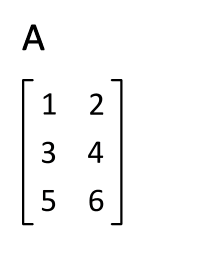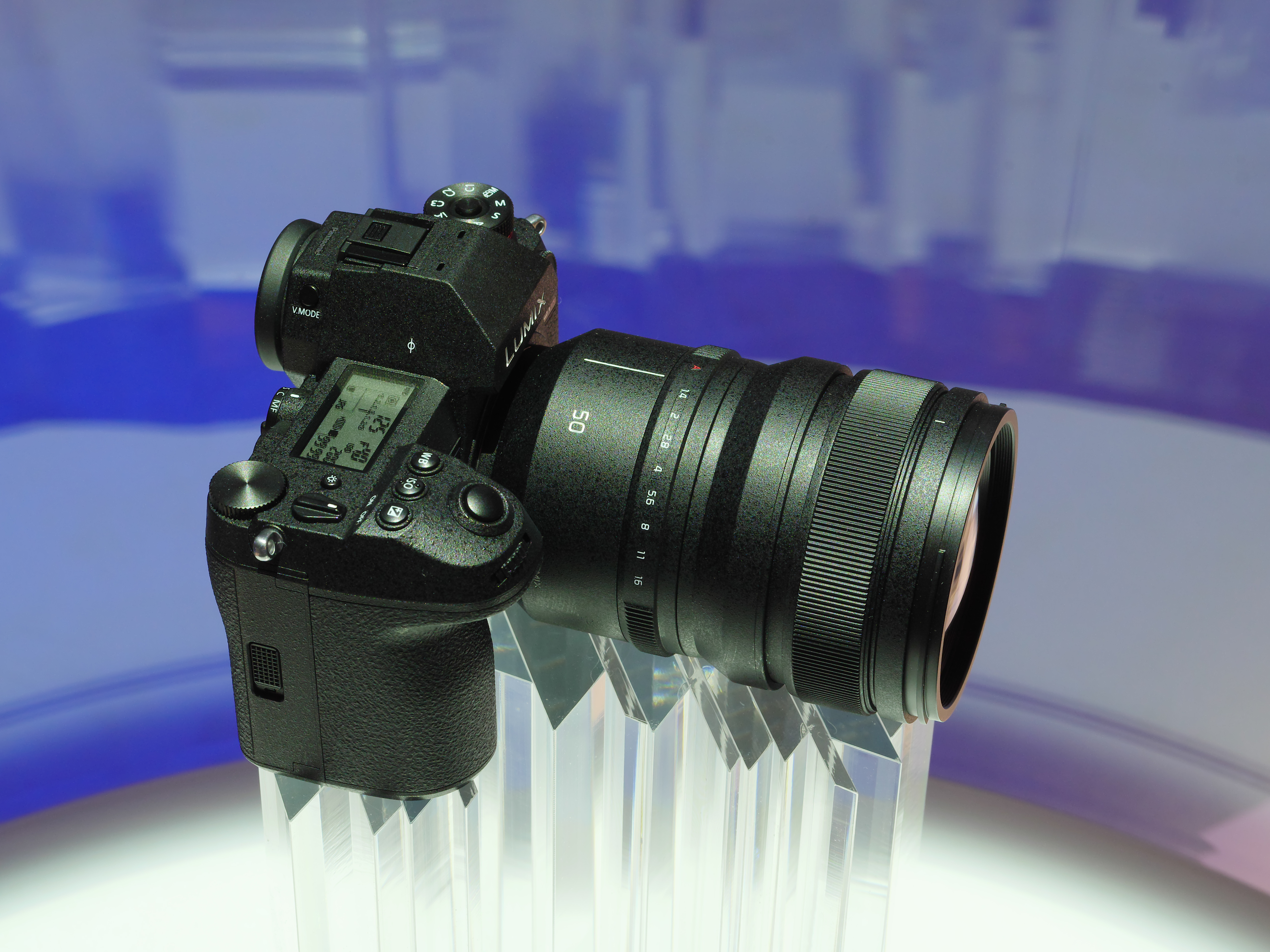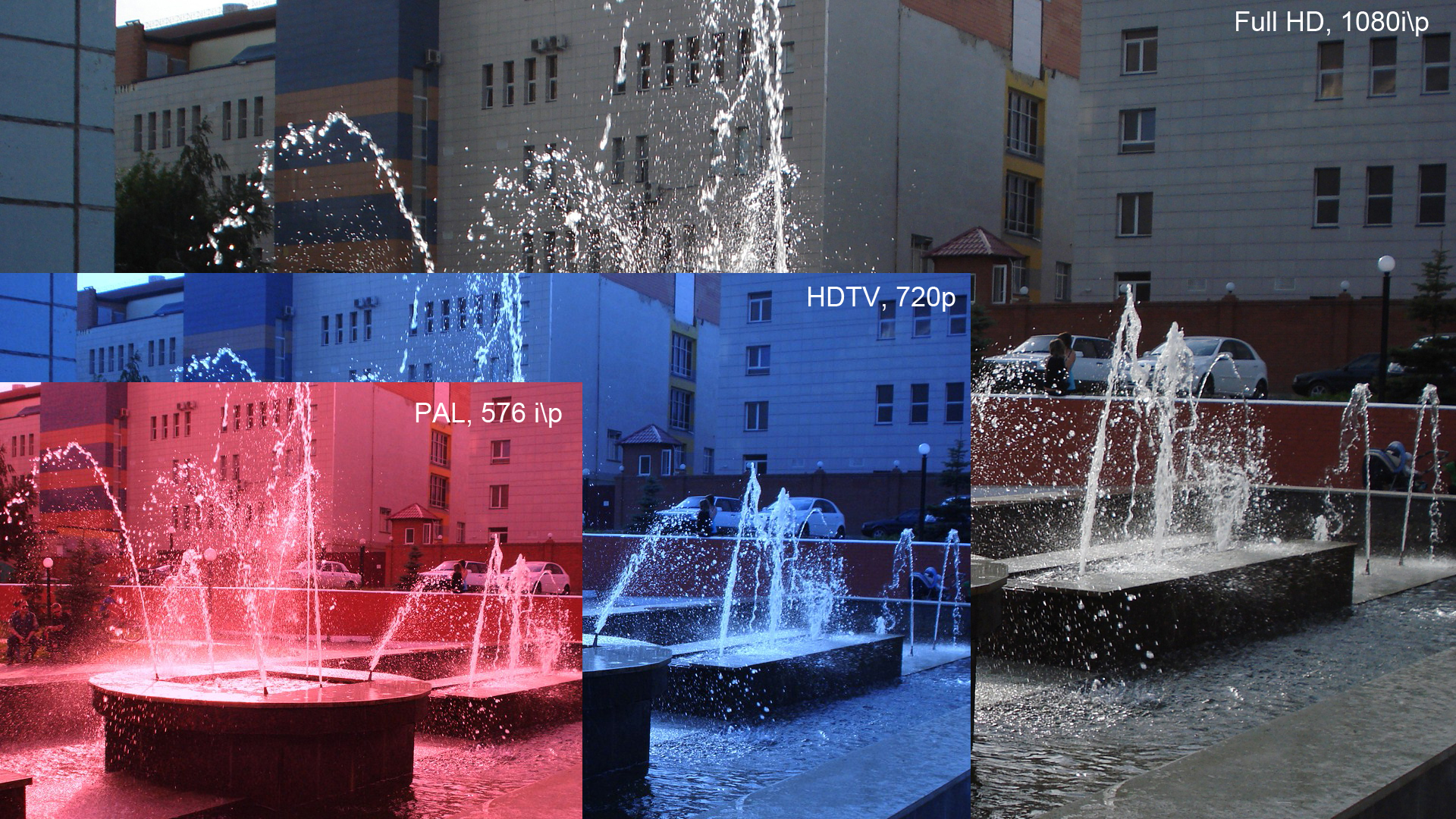|
Digital Zoom
Digital zoom is a method of decreasing the precise angle of view of a digital photograph or video image. It is accomplished by cropping an image down to an area with the same aspect ratio as the original, and scaling the image up to the dimensions of the original. The camera's optics are not adjusted. It is accomplished electronically, so no optical resolution is gained. Digital zooming may be enhanced by computationally expensive algorithms which sometimes involves artificial intelligence. In cameras that perform lossy compression, digital zoom is preferred to enlargement in post-processing, as the zooming may be applied before detail is lost to compression. In cameras that save in a lossless format, resizing in post-production yields results equal or superior to digital zoom. Lower-end camera phones use only digital zoom and do not have optical zoom, while many higher-end phones have additional rear cameras, including fixed telephoto lenses that allow for the simulation of ... [...More Info...] [...Related Items...] OR: [Wikipedia] [Google] [Baidu] |
Zoom
Zoom may refer to: Arts, entertainment and media Film * ''Zoom'' (2006 film), starring Tim Allen * ''Zoom'' (2015 film), a Canada-Brazil film by Pedro Morelli * ''Zoom'' (2016 Kannada film), a Kannada film * ''Zoom'' (2016 Sinhala film), a Sri Lankan film Music * Zoom (dance music group), a Eurodance group formed in Denmark * ''Zoom'' (The Knack album), 1998 * ''Zoom'' (Electric Light Orchestra album), 2001 * ''Zoom'' (Noah23 album), 2011 * ''Zoom'' (Rachid Taha album) * ''Zoom'', an album by Alvin Lee * "Zoom" (Dr. Dre song), 1998 * "Zoom" (Fat Larry's Band song), 1982 * "Zoom" (Jessi song), 2022 * "Zoom" (Lil Boosie song), 2006 * "Zoom", a song by the Commodores from their self-titled album * "Zoom", a song by Last Dinosaurs from the album '' In a Million Years'' * "Zoom", a song by Red Velvet from the extended play '' The ReVe Festival 2022 – Birthday'' * "Zoom!", a song by Super Furry Animals from the album ''Love Kraft'' * "Zoom", a song by Soda Stereo from th ... [...More Info...] [...Related Items...] OR: [Wikipedia] [Google] [Baidu] |
Raster Graphics
upright=1, The Smiley, smiley face in the top left corner is a raster image. When enlarged, individual pixels appear as squares. Enlarging further, each pixel can be analyzed, with their colors constructed through combination of the values for red, green and blue. In computer graphics and digital photography, a raster graphic, raster image, or simply raster is a two-dimensional image or picture represented as a rectangular Matrix (mathematics), matrix or grid of pixels, viewable via a computer display, paper, or other display medium. A raster image is technically characterized by the width and height of the image in pixels and by the number of bits per pixel. Raster images are stored in image files with varying dissemination, production, generation, and acquisition formats. The printing and prepress industries know raster graphics as contones (from "continuous tones"). In contrast, '' line art'' is usually implemented as vector graphics in digital systems. Many raster ... [...More Info...] [...Related Items...] OR: [Wikipedia] [Google] [Baidu] |
Teleside Converter
A teleside converter (also known as a telephoto conversion lens or a front mount teleconverter) is a secondary lens which is mounted on the front of a photographic lens to increase the effective focal length of the lens they are attached to. They are used on cameras and video cameras with non–interchangeable lenses to increase the magnification of the image. Their design is usually that of an afocal Galilean telescope that alters the width of the entering beam of light without affecting the divergence of the beam, so they can change the effective focal length 1 to 3 times without increasing focal ratio. The down side to teleside converters is they will vignette the image on the wide angle setting if used on a zoom lens. Minimum focal length without vignetting will increase inline with higher power of the teleside converter. Before vignetting appears, light fall-off will appear first and in general shooting this light fall-off may not be noticeable. The other concern is minimum ... [...More Info...] [...Related Items...] OR: [Wikipedia] [Google] [Baidu] |
Image Scaling
In computer graphics and digital imaging, image scaling refers to the resizing of a digital image. In video technology, the magnification of digital material is known as upscaling or resolution enhancement. When scaling a vector graphic image, the graphic primitives that make up the image can be scaled using geometric transformations with no loss of image quality. When scaling a raster graphics image, a new image with a higher or lower number of pixels must be generated. In the case of decreasing the pixel number (scaling down), this usually results in a visible quality loss. From the standpoint of digital signal processing, the scaling of raster graphics is a two-dimensional example of sample-rate conversion, the conversion of a discrete signal from a sampling rate (in this case, the local sampling rate) to another. Mathematical Image scaling can be interpreted as a form of image resampling or image reconstruction from the view of the Nyquist sampling theorem. According ... [...More Info...] [...Related Items...] OR: [Wikipedia] [Google] [Baidu] |
Panasonic
is a Japanese multinational electronics manufacturer, headquartered in Kadoma, Osaka, Kadoma, Japan. It was founded in 1918 as in Fukushima-ku, Osaka, Fukushima by Kōnosuke Matsushita. The company was incorporated in 1935 and renamed and changed its name to in 2008. In 2022, it reorganized as a holding company and adopted its current name. In addition to consumer electronics, for which it was the world’s largest manufacturer in the late 20th century, Panasonic produces a wide range of products and services, including Rechargeable battery, rechargeable batteries, automotive and avionic systems, industrial equipment, as well as home renovation and construction. The company is listed on the Tokyo Stock Exchange and is a constituent of the Nikkei 225 and TOPIX, TOPIX 100 indices, with a secondary listing on the Nagoya Stock Exchange. Corporate name From 1925 to October 1, 2008, the company's corporate name was "Matsushita Electric Industrial Co." (MEI). On January 10, 2008, ... [...More Info...] [...Related Items...] OR: [Wikipedia] [Google] [Baidu] |
Cisco
Cisco Systems, Inc. (using the trademark Cisco) is an American multinational digital communications technology conglomerate corporation headquartered in San Jose, California. Cisco develops, manufactures, and sells networking hardware, software, telecommunications equipment and other high-technology services and products. Cisco specializes in specific tech markets, such as the Internet of things (IoT), domain security, videoconferencing, and energy management with products including Webex, OpenDNS, Jabber, Duo Security, Silicon One, and Jasper. Cisco Systems was founded in December 1984 by Leonard Bosack and Sandy Lerner, two Stanford University computer scientists who had been instrumental in connecting computers at Stanford. They pioneered the concept of a local area network (LAN) being used to connect distant computers over a multiprotocol router system. The company went public in 1990 and, by the end of the dot-com bubble in 2000, had a market capitali ... [...More Info...] [...Related Items...] OR: [Wikipedia] [Google] [Baidu] |
Canon Inc
Canon Inc. (; Hepburn: ) is a Japanese multinational corporation headquartered in Ōta, Tokyo, specializing in optical, imaging, and industrial products, such as lenses, cameras, medical equipment, scanners, printers, and semiconductor manufacturing equipment. Canon has a primary listing on the Tokyo Stock Exchange and is a constituent of the TOPIX Core 30 and Nikkei 225 indexes. It used to have a secondary listing on the New York Stock Exchange. Name The company was originally named (). In 1934, it produced the ''Kwanon'', a prototype for Japan's first-ever 35mm camera with a focal-plane-based shutter. In 1947, the company name was changed to ''Canon Camera Co., Inc.'', shortened to ''Canon Inc.'' in 1969. The name Canon comes from Buddhist bodhisattva (), previously transliterated as Kuanyin, Kwannon, or Kwanon in English. History 1933–1970 The origins of Canon date back to the founding of Precision Optical Instruments Laboratory in Japan in 1933 by Takeshi Mitarai, ... [...More Info...] [...Related Items...] OR: [Wikipedia] [Google] [Baidu] |
Sony
is a Japanese multinational conglomerate (company), conglomerate headquartered at Sony City in Minato, Tokyo, Japan. The Sony Group encompasses various businesses, including Sony Corporation (electronics), Sony Semiconductor Solutions (imaging and sensing), Sony Entertainment (including Sony Pictures and Sony Music Group), Sony Interactive Entertainment (video games), Sony Financial Group, and others. Sony was founded in 1946 as by Masaru Ibuka and Akio Morita. In 1958, the company adopted the name Initially an electronics firm, it gained early recognition for products such as the TR-55 transistor radio and the CV-2000 home video tape recorder, contributing significantly to Japan's Japanese economic miracle, post-war economic recovery. After Ibuka's retirement in the 1970s, Morita served as chairman until 1994, overseeing Sony's rise as a global brand recognized for innovation in consumer electronics. Landmark products included the Trinitron color television, the Walkma ... [...More Info...] [...Related Items...] OR: [Wikipedia] [Google] [Baidu] |
480p
480p is the shorthand name for a family of video display resolutions. The p stands for progressive scan, i.e. non-interlaced. The ''480'' denotes a vertical resolution of 480 pixels, usually with a horizontal resolution of 640 pixels and 4:3 aspect ratio ( 640) or a horizontal resolution of 854 (848 should be used for mod16 compatibility) pixels for an approximate 16:9 aspect ratio ( 853.). Since a pixel count must be a whole number, in Wide VGA displays it is generally rounded up to 854 to ensure inclusion of the entire image. The frames are displayed progressively as opposed to interlaced. 480p was used for many early plasma televisions. Standard definition has always been a 4:3 aspect ratio with a pixel resolution of at 60 Hz for NTSC regions, and 720 or for PAL regions (1024 wide for widescreen displays). However, standard definition defines a 15.7k Hz horizontal scanrate, which means that interlacing has to be used for those resolution modes. The lowercase ... [...More Info...] [...Related Items...] OR: [Wikipedia] [Google] [Baidu] |
720p
720p (720 lines progressive) is a progressive HD signal format with 720 horizontal lines/1280 columns and an aspect ratio (AR) of 16:9, normally known as widescreen HD (1.78:1). All major HD broadcasting standards (such as SMPTE 292M) include a 720p format, which has a resolution of 1280×720. The number ''720'' stands for the 720 horizontal scan lines of image display resolution (also known as 720 pixels of vertical resolution). The ''p'' stands for progressive scan, i.e. non-interlaced. When broadcast at 60 frames per second, 720p features the highest temporal resolution possible under the ATSC and DVB standards. The term assumes a widescreen aspect ratio of 16:9, thus implying a resolution of 1280×720 px (0.9 megapixels). 720i (720 lines interlaced) is an erroneous term found in numerous sources and publications. Typically, it is a typographical error in which the author is referring to the 720p HDTV format. However, in some cases it is incorrectly presented ... [...More Info...] [...Related Items...] OR: [Wikipedia] [Google] [Baidu] |
1080p
1080p (1920 × 1080 progressively displayed pixels; also known as Full HD or FHD, and BT.709) is a set of HDTV high-definition video modes characterized by 1,920 pixels displayed across the screen horizontally and 1,080 pixels down the screen vertically; the ''p'' stands for progressive scan, ''i.e.'' non- interlaced. The term usually assumes a widescreen aspect ratio of 16:9, implying a resolution of 2.1 megapixels. It is often marketed as Full HD or FHD, to contrast 1080p with 720p resolution screens. Although 1080p is sometimes referred to as 2K resolution (meaning having a horizontal resolution of approximately 2,000 pixels), other sources differentiate between 1080p and (true) 2K resolution. 1080p video signals are supported by ATSC standards in the United States and DVB standards in Europe. Applications of the 1080p standard include television broadcasts, Blu-ray Discs, smartphones, Internet content such as YouTube videos and Netflix TV shows and movi ... [...More Info...] [...Related Items...] OR: [Wikipedia] [Google] [Baidu] |
2160p
4K resolution refers to a horizontal display resolution of approximately 4,000 pixels. Digital television and digital cinematography commonly use several different 4K resolutions. In television and consumer media, 38402160 (4K UHD) with a 16:9 aspect ratio is the dominant standard, whereas the digital cinema, movie projection industry uses 40962160 (Digital Cinema Initiatives, DCI 4K). The 4K television market share increased as prices fell dramatically throughout 2013 and 2014. 4K standards and terminology The term "4K" is generic and refers to any resolution with a horizontal pixel count of approximately 4,000. Several different 4K resolutions have been standardized by various organizations. The terms "4K" and "Ultra HD" are used more widely in marketing than "2160p" (''cf.'' "1080p"). While typically referring to motion pictures, some digital camera vendors have used the term "4K photo" for still photographs, making it appear like an especially high resolution even though 3 ... [...More Info...] [...Related Items...] OR: [Wikipedia] [Google] [Baidu] |







